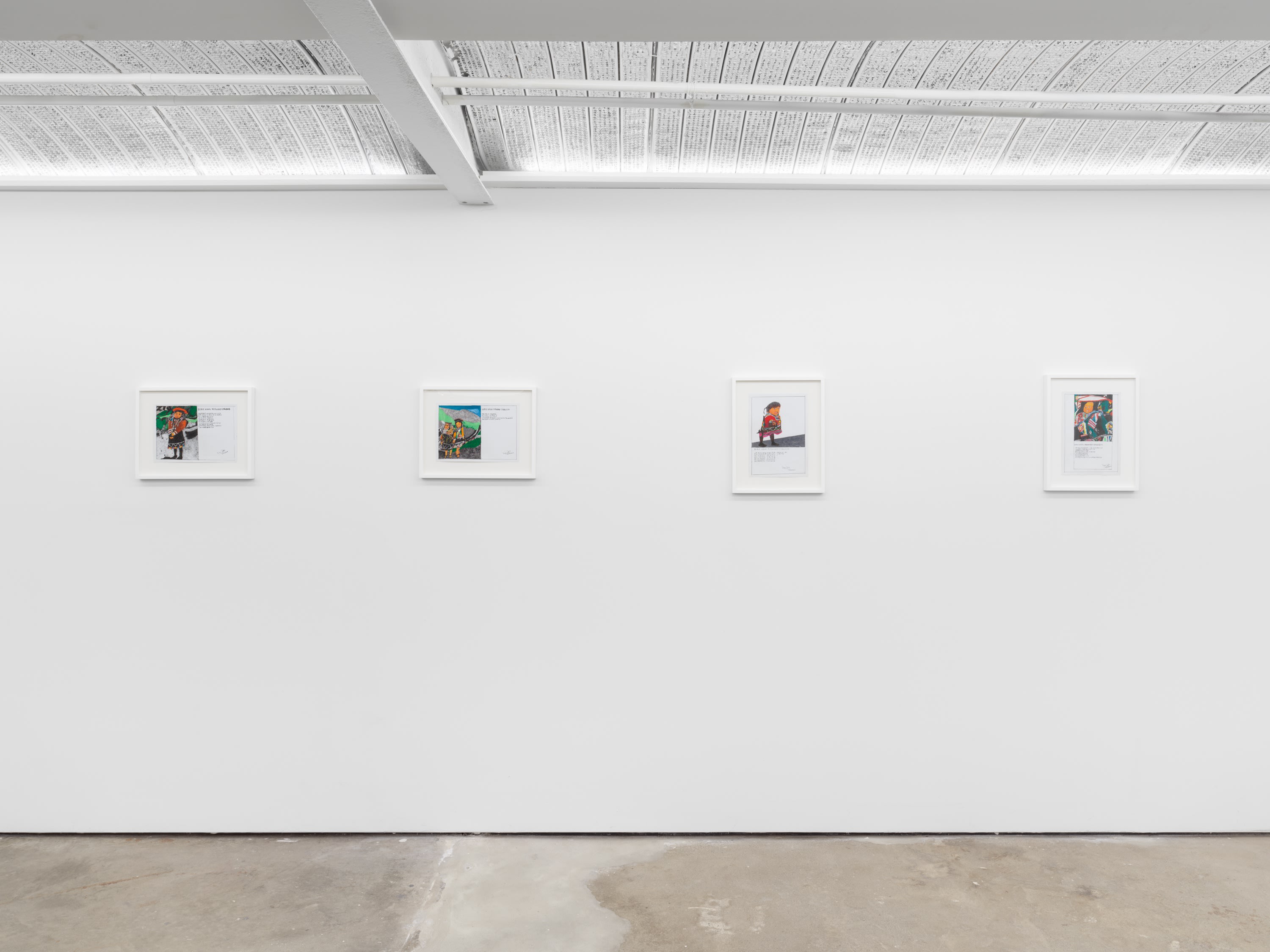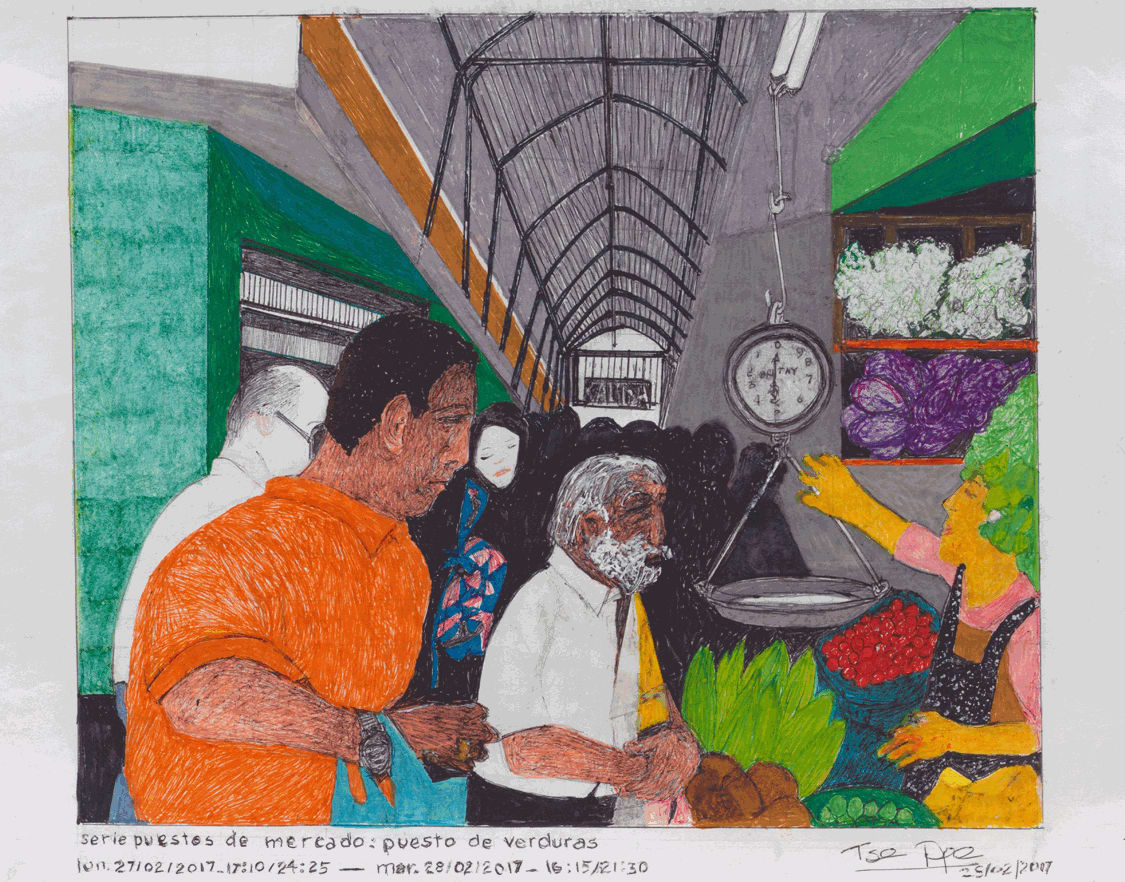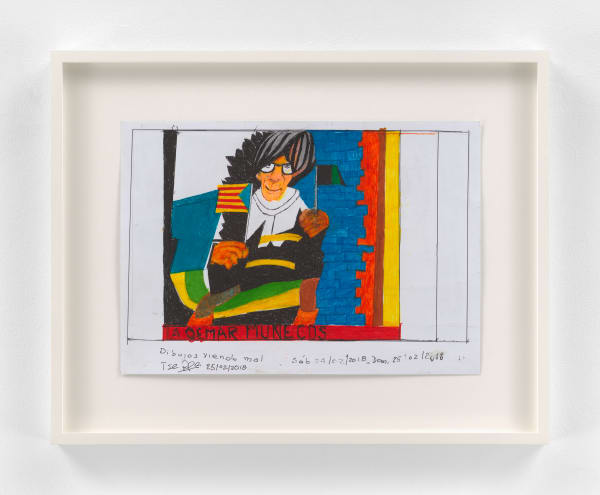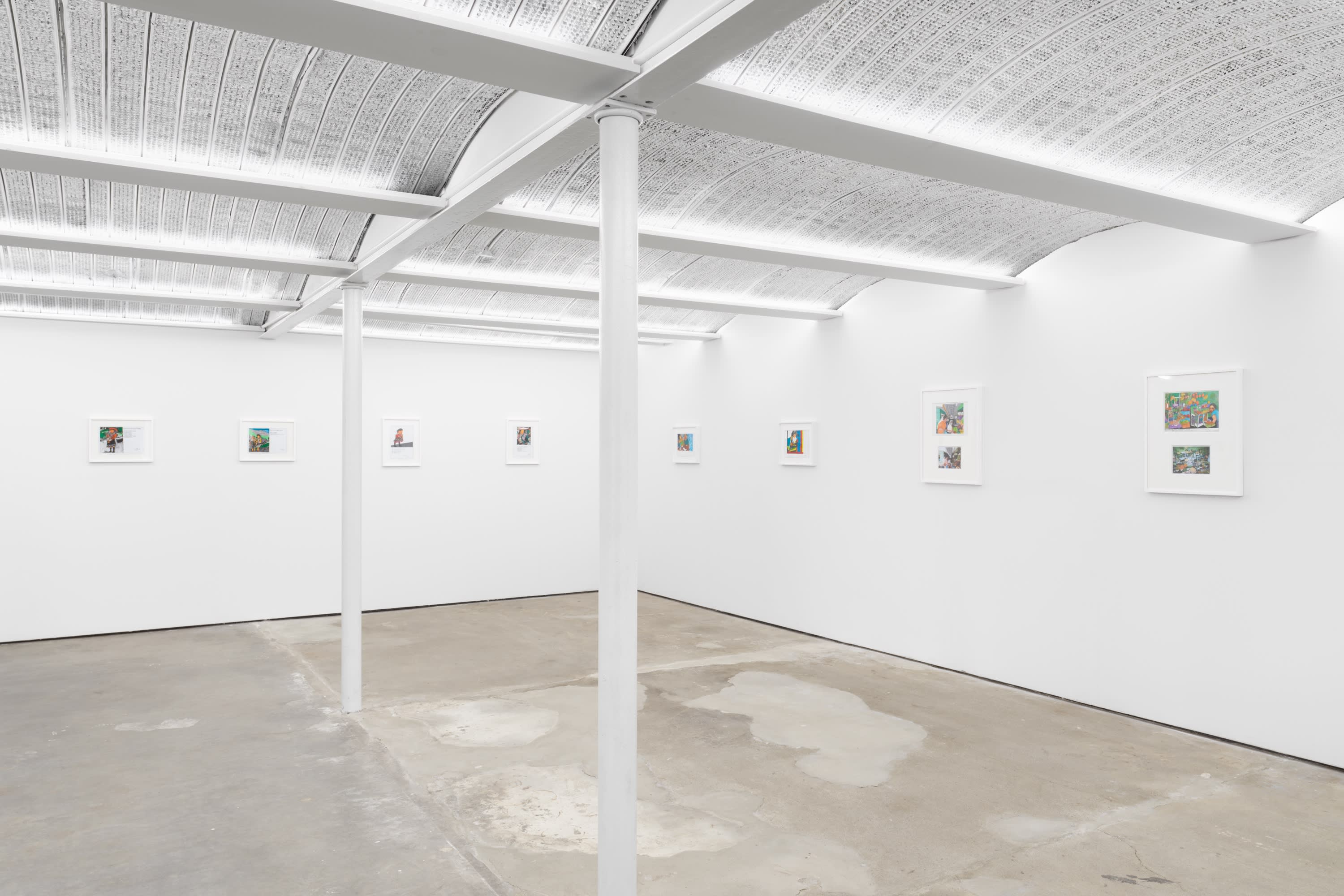-
Teresa Burga
Dibujos (1974-2019)
Germantown: March 18–April 17, 2022
-

Teresa Burga, 2019. Photo: Ross Collab
-

-

-
-
-
Teresa Burga’s 1974 series of Theater drawings reveal the artist’s interest in breaking down and examining the mechanics of art-making. Adopting a systematic approach to creation, in the margins of each work from the series, Burga inscribes the dates and time spent on the piece––tracking her hours as if clocking in and out of a job. Literally drawing parallels between artistic production and other forms of labor, images like Sin Título/Untitled (from the series Theater) 04 (1974) faithfully reproduce the covers of periodicals using crosshatching and pointillist pencil marks. With their emphasis on tracking hours and marks made, Burga’s Theater series anticipates later conceptual projects like Perfil de la mujer Peruana (1980–81), which worked methodically with data, statistics, and information systems to provide a comprehensive representation of Peruvian women.
-

-

-

Untitled (contigo...) final de la obra - octuber 2013 - viernes 18 - hora: - 08:06 P.M., 2013
In 3 parts: felt tip pen, fineliner, pencil and ballpoint pen on paper; felt tip pen on printout; felt tip pen on printout
11 ½ x 8 ¼ inches each (29.2 x 21 cm each) -
In late drawings, Teresa Burga produces “direct" copies of found images sourced from the internet and newspapers. These versions are incredibly labor-intensive for the artist to create as she relies on a painstaking process that requires her to carefully copy the outlines of forms and then fill them in with tiny dots. While this technique alludes to that of Pointillism, it also more specifically recalls that of Ben-Day dots, an inexpensive method used to create photomechanical prints.
In Untitled (contigo...) final de la obra - octuber 2013 - viernes 18 - hora: - 08:06 P.M. (2013), Burga employs this pseudo-mechanical approach to copy the same source material three times. Carefully recording the time it takes her to create the triptych—clocking in and out—she draws parallels between artistic creation and other forms of labor. Recreating by hand a mechanical process intended for mass image dissemination, the artist challenges the labor hierarchy, which privileges innovation over reproduction. -

-
In Niñas Peruanas Cusqueñas, Burga depicts young indigenous women from Peru’s Andean region dressed in traditional garments. Sourcing imagery from the internet, the drawings recall an untitled series of drawings from 1974, in which Burga selected images of women at random from various print media and then rendered the images on paper. Those drawings, like Niñas Peruanas Cusqueñas, suggest the perils of images without context—how assumptions are made, stereotypes are formed, and knowledge is gathered.
In lieu of context, in Niñas Peruanas Cusqueñas, Burga offers information about the process of making the drawing itself—each drawing's title references the date of its completion. Additionally, with the mechanical distance of someone who spent a large part of her career working methodically with data, statistics, and information systems, in the margins of the drawings Burga inscribes the dates and time spent on each work—tracking her hours as if clocking in and out of a job. Formally distinct from Burga’s conceptual work of past decades, these drawings position artistic production as a type of labor, recalling her installation works from the 1970s.
-

-

-

-

-

-

-
-

-
Burga’s varied works on paper, from faithful facsimiles to automatic drawings to deliberately deskilled compositions, reflect her belief that complacency was the death knell of artistic innovation. As she explained, “I wanted to escape the artist’s taste and that subjective self-abstraction, because the worst thing an artist can do is to be self-complacent and please the public. I’ve always believed that.”
-






















